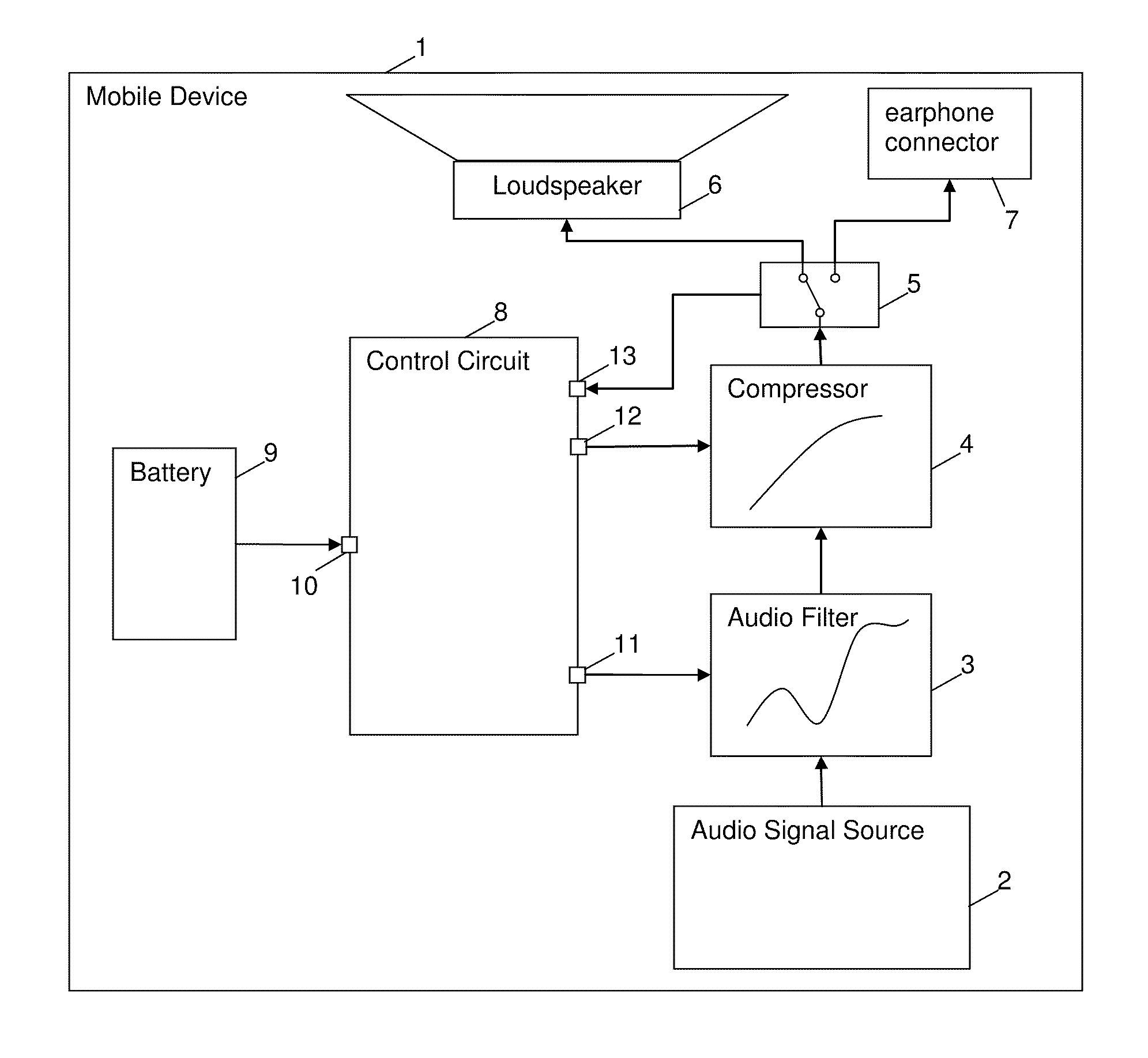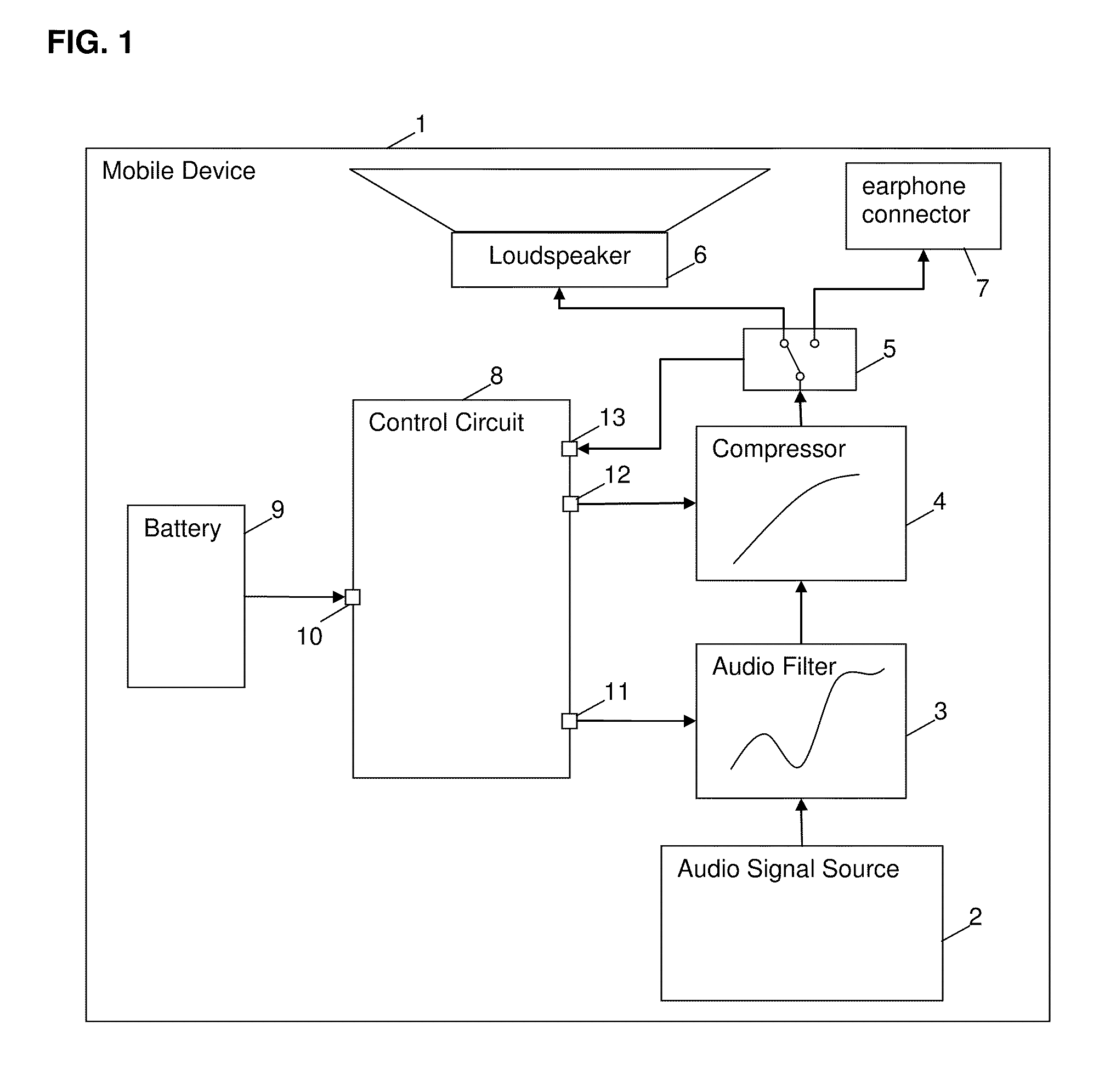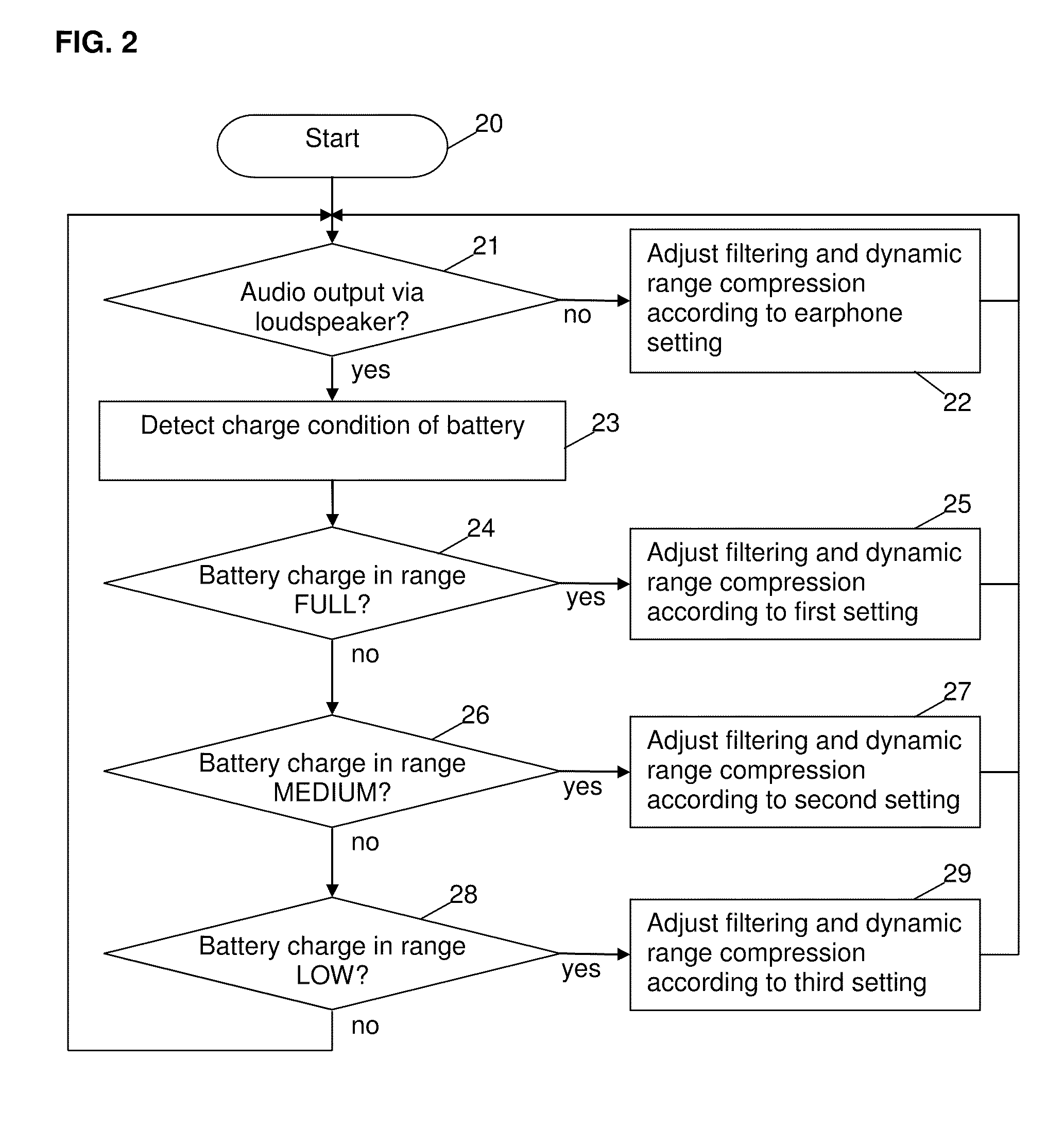Method and circuit for controlling an output of an audio signal of a battery-powered device
a battery-powered device and audio signal technology, applied in the direction of gain control, combination control, volume compression/expansion, etc., can solve the problems of considerable power consumption of amplifier amplifying the audio signal for the loudspeaker, and achieve the effects of reducing energy consumption, saving power, and affecting energy consumption
- Summary
- Abstract
- Description
- Claims
- Application Information
AI Technical Summary
Benefits of technology
Problems solved by technology
Method used
Image
Examples
Embodiment Construction
[0033]In the following, exemplary embodiments of the present invention will be described in detail. It is to be understood that the following description is given only for the purpose of illustrating the principles of the invention and it is not to be taken in a limiting sense. Rather, the scope of the invention is defined only by the appended claims and is not intended to be limited by the exemplary embodiments hereinafter.
[0034]It is also to be understood that in the following detailed description of the exemplary embodiments, any direct connection or coupling between functional blocks, devices, components or other physical or functional units shown in the drawings or description herein could also be implemented by an indirect connection or coupling.
[0035]It is further to be understood that the features of the various exemplary embodiments described herein may be combined with each other unless specifically noted otherwise.
[0036]FIG. 1 shows an embodiment of a mobile device 1 acco...
PUM
 Login to View More
Login to View More Abstract
Description
Claims
Application Information
 Login to View More
Login to View More - R&D
- Intellectual Property
- Life Sciences
- Materials
- Tech Scout
- Unparalleled Data Quality
- Higher Quality Content
- 60% Fewer Hallucinations
Browse by: Latest US Patents, China's latest patents, Technical Efficacy Thesaurus, Application Domain, Technology Topic, Popular Technical Reports.
© 2025 PatSnap. All rights reserved.Legal|Privacy policy|Modern Slavery Act Transparency Statement|Sitemap|About US| Contact US: help@patsnap.com



